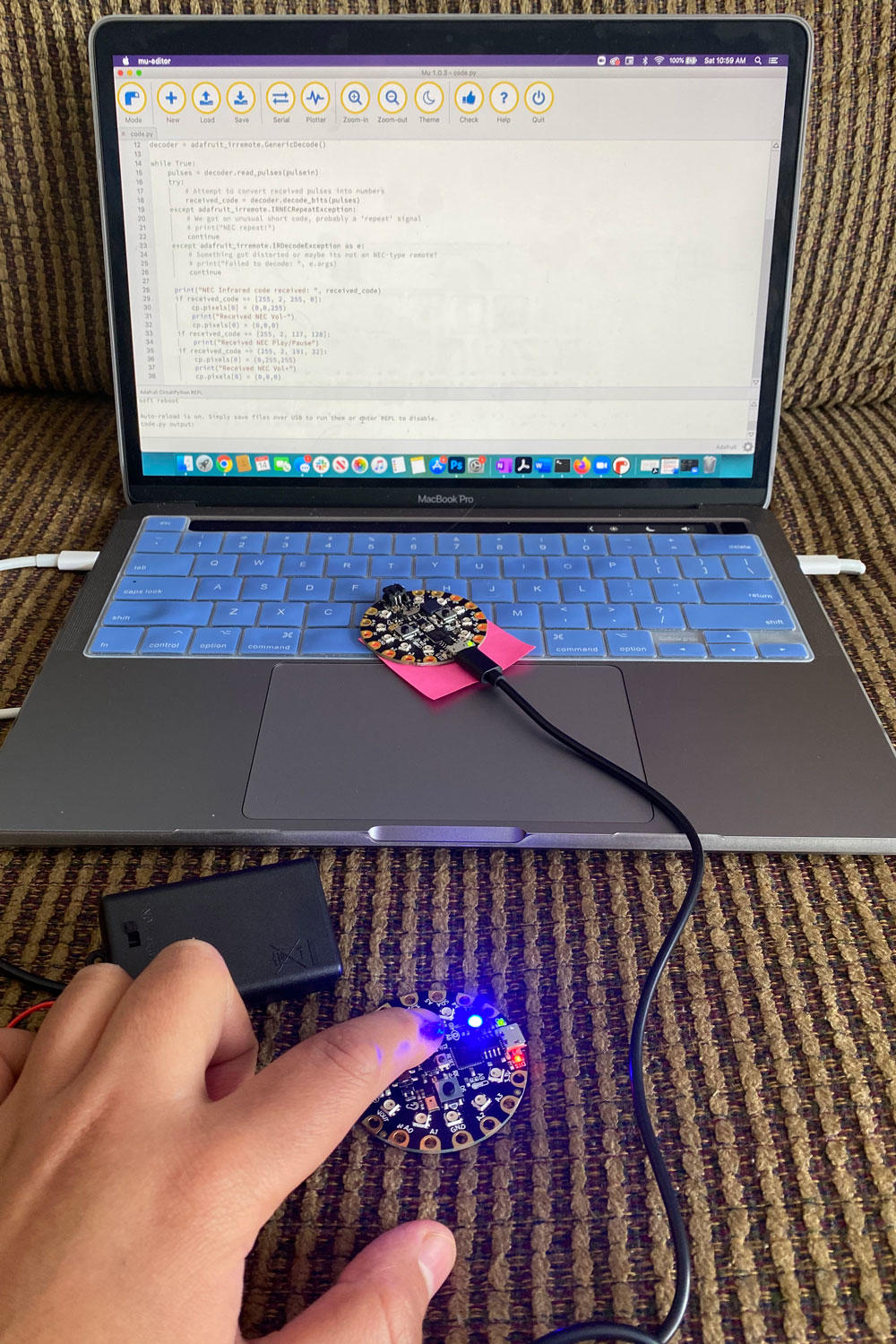Dec. 2, 2020
Students design wearable devices to aid with mental health

Combining artistic approaches with entrepreneurialism isn't always likely. In Wearable Design for Mental Health, a topics course designed by art instructor Tia Halliday, students are challenged to do just that.
“The course merges art, psychology, design, electronics, coding and wearable technology to define solutions for mental health — all taught remotely online,“ says Halliday. “A key part of the course was for students to engage with community stakeholders and develop fully functional prototypes.”
- Pictured above: Alex Mai demonstrates the prototype of the "loneliness pillow." Photo by Alex Mai
Under the mentorship of Kathryn Blair, MFA’18, and graduate art student Kenzie Housego — who both have experience with wearable technology — the students learned about this emerging field of new media as art making medium, followed by basic coding skills.
“This course is not just about technology and art,” says Housego. “It goes one step further by asking how technology can help support mental health, and having students apply this new knowledge to create their own devices.”
Loneliness pillow
Inspired by his past experiences, art student Alex Mai decided to focus on emotional loneliness.
“When I was at my loneliest, I craved validation and intimacy, but I had no one to comfort me,” says Mai. “Instead, I often hugged a pillow during the night to ease my mind.”
Mai designed a wearable device named "the loneliness pillow," aimed at helping to cure loneliness. It resembles a small, cute figure that can be wrapped around the user, but there is also quite a bit of technology involved.
“By using specific materials and tools like heating pads and pressurized air, the pillow can simulate an intimate connection, including body warmth and physical touch,” says Mai.
Mai had to learn how to code and create mechanisms to move parts, and learn new art making methods to produce his wearable device.
“The most challenging part of the process was to find a mechanism that simulates a hug,” says Mai. “I experimented with different methods and found that using a pressurized air chamber was the best way to create movement and pressure.”
A drawing of Anna Bilik's wearable device that guides the user through breathing exercises.
Anna Bilik
Breathing through anxiety
Anna Bilik, a double major in art and psychology, was excited about being able to connect the different disciplines for the first time in her studies.
“I have created a wearable device that helps to learn and master breathing exercises during an anxiety attack,” says Bilik. “Learning how to control fear and stress is crucial for young people's mental health to prevent changes in the developing neuro system.”
Bilik’s device changes light colours, showing the user when to inhale (blue light), hold air (red light), and exhale (white light). It can serve as a breathing assistant, when it feels impossible to start a breathing exercise on your own.
“This course gave me a semester full of inspiration and practical knowledge, and made me broaden my perspective outside of art,” says Bilik. “I genuinely wish more courses would encourage students to develop transdisciplinary skills like this.”

Sabrina Lakhdhir tests the communication between two boards.
Sabrina Lakhdhir
Friendship bears
Sabrina Lakhdhir, a major in computer science, created friendship bears to combat feelings of loneliness, uncertainty, and anxiety. The idea is that the bears can communicate with each other over a distance.
“These mental health concerns have been magnified in many of our lives over the past year as we have been significantly affected by the ongoing COVID-19 situation,” says Lakhdhir. “Comfort, communication, and contact with loved ones can help ease these feelings.”
For Lakhdhir, the challenge of the course wasn’t in coding and building.
“In most of my past projects, there is often a focus on the application rather than the design,” explains Lakhdhir. “Having to create multiple drawings to convey one idea was definitely the hardest part for me.”
The students’ prototypes will be presented as part of the Nickle at Noon event on Dec. 3, 2020.






